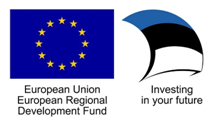Data Ethnography registration
To register, please fill in the form below:
Add to calendar
iCal calendarBy Dr. Jonathon Hutchinson, University of Sydney
Target group: doctoral students and MA students of Media, Communication, AV arts, Social Sciences and (Digital) Humanities
Content and aims: This session presents evidence from the visual cultures that surround YouTube, supporting the development of a new methodology to research the so-called ‘black boxes’. The methodology is defined as data ethnography and is the combination of stakeholder consultation, top level data analysis, persona construction, fine data analysis and finally topic or genre analysis. Data ethnography enables us to not only research what we cannot see, but provides a useful way to understand platform interoperability. To unpack this version of a platform black-box, participants will create a number of ‘personas’ to train the YouTube algorithm to observe and record how the recommendation system reacts and responds to particular users. Participants will also scrape YouTube video and subscriber data to map and measure the video networks of particular users, genres and topics. Finally, users will visualize their results and discuss their observations with other participants.
Preliminary schedule:
10:00 – 11:00 introductory lecture on the environment and the relative theory regarding Youtube and data ethnography
11:00 – 12:00 lecture and discussion on design thinking and persona construction
12:00 – 12:30 Lunch, self organized
12:30 – 13:15 training the Youtube algorithm and data scraping
13:15 – 14:00 analysis and visualization, Tableau, possibly SNA
Additional information:
Katrin Tiidenberg
katrin.tiidenberg@tlu.ee
(content related questions)
Kristel Karu-Kletter
karuklet@tlu.ee
(organisational questions)
This session presents evidence from the visual cultures that surround YouTube, supporting the development of a new methodology to research the so-called ‘black boxes’. The methodology is defined as data ethnography and is the combination of stakeholder consultation, top level data analysis, persona construction, fine data analysis and finally topic or genre analysis. Data ethnography enables us to not only research what we cannot see, but provides a useful way to understand platform interoperability.
Humanities and social science digital research methods have been interrupted due to the prominence of privacy and surveillance concerns of platform interoperability that produces large quantities of personification data. The Facebook Cambridge Analytica scandal, especially the revelation of its ability to construct predictive models of its user’s behaviors, brought to the public interest concerns over how platform user data is harvested, shared and manipulated by third party providers. The global pushback against the platform provider’s use of these data resulted in platforms closing down some access to application programming interfaces (APIs) to inhibit data manipulation. However, these restrictions also impact on how public benefit research is conducted, providing a useful prompt to rethink how humanities, social scientists and human computer interaction scholars research the digital.
While the datafication of our digital lives has provided us with new insights, the digital methods that enable us to research our digital selves have always been mixed to understand the field of enquiry, along with the surrounding political, cultural and economic constructs. Increased digital practices built on sophisticated calculations, for example the use of algorithmic recommendations, connected devices, internet of things, and the like, have impacted on our research environments, prompting the question, how do we research what we can’t see?
To unpack this version of a platform black-box, participants will create a number of ‘personas’ to train the YouTube algorithm to observe and record how the recommendation system reacts and responds to particular users. Participants will also scrape YouTube video and subscriber data to map and measure the video networks of particular users, genres and topics. Finally, users will visualize their results and discuss their observations with other participants.
Activity is financed by the European Regional Development Fund through the institutional package measure for R&D institutions and higher education institutions (ASTRA project TLU TEE of Tallinn University as a promoter of intelligent lifestyle).
